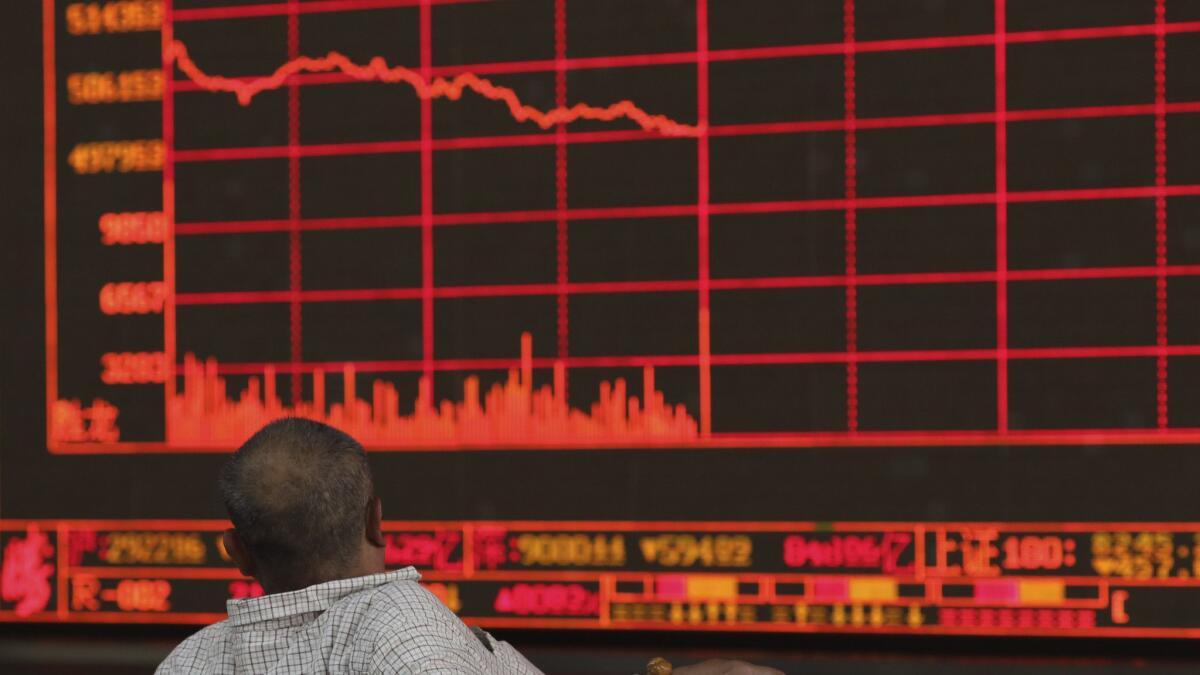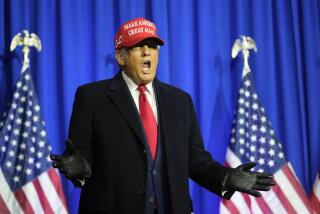Trump managed to bring even more chaos to the high-stakes China trade negotiations

Global stock markets took a hit Monday morning, thanks to a pair of weekend tweets by President Trump, who cannot seem to leave well enough alone.
In case you’ve forgotten, three days ago the federal government released some superb news about the U.S. economy. Unemployment was down again, productivity and wages up — the only downside was a slight decline in the labor force participation rate. It was close to a home run, and the markets responded enthusiastically.
Then on Sunday, Trump dropped a bombshell. With a delegation of top Chinese officials due to arrive in Washington on Wednesday, the president tweeted that he would be raising the current 10% tariffs on $200 billion of Chinese goods to 25% on Friday. He also planned to impose 25% tariffs on the rest of China’s exports to the United States “shortly.”
This is clearly a negotiating tactic by a president who prefers force to charm in trade talks. But it evidently sent fears through global markets that the big trade deal that the U.S. and China were supposedly nearing wasn’t that close after all.
Hence the sell-off. Some U.S. indexes were down more than 2% at the opening bell, although they trimmed their losses as the morning went on.
U.S. Trade Representative Robert Lighthizer has said throughout the process that the negotiations are difficult and that big hurdles remain to be overcome. So it wouldn’t be a real surprise if no deal were forthcoming in the near future.
And until there is a deal or the two sides give up on achieving one, it’s hard to tell whether the president’s Bad Cop tactics are working.
Trump’s decision to slap global tariffs on steel and aluminum is hard to defend — it distorts trade to favor U.S. metals manufacturers at the expense of every other U.S. manufacturer and consumer. But there is an argument for using tariffs to try to change China’s bad behavior — not a good argument but at least a defensible one.
China has flouted international trade rules without conscience. It has systematically stolen intellectual property through industrial espionage and cybercrime. And once the U.S. agreed to let China into the World Trade Organization, it lost important leverage it held to compel China to clean up its act. Trump’s moves to withdraw the U.S. from a Pacific trading pact and to destabilize the WTO sacrificed more of that leverage.
Nevertheless, tariffs cut both ways. They are taxes not on China but on U.S. purchasers of Chinese goods. And China has retaliated by cutting its imports from U.S. farmers. That’s why the United States pushed its global trading partners in the latter half of the 20th century to abandon unilateral tariffs and escape the cycle of tit-for-tat retaliation.
Enter the Fray: First takes on the news of the minute »
Trump isn’t moved by such arguments. He believes his willingness to slap tariffs even on our closest trading partners and allies gives him an edge at the bargaining table; after all, the U.S. imports far, far more than it exports. We can impose more tariffs on other countries’ goods than they can impose on ours — never mind that the tariffs Trump levies are taxes on his own constituents.
The U.S. and China appeared to be heading toward a deal of some kind before Sunday’s tweets, but the president clearly felt the deal was not good enough. Now we’ll see if a hammer strike of tariffs can yield more concessions, or if it just persuades China to stop negotiating until Trump leaves office.
More to Read
A cure for the common opinion
Get thought-provoking perspectives with our weekly newsletter.
You may occasionally receive promotional content from the Los Angeles Times.






